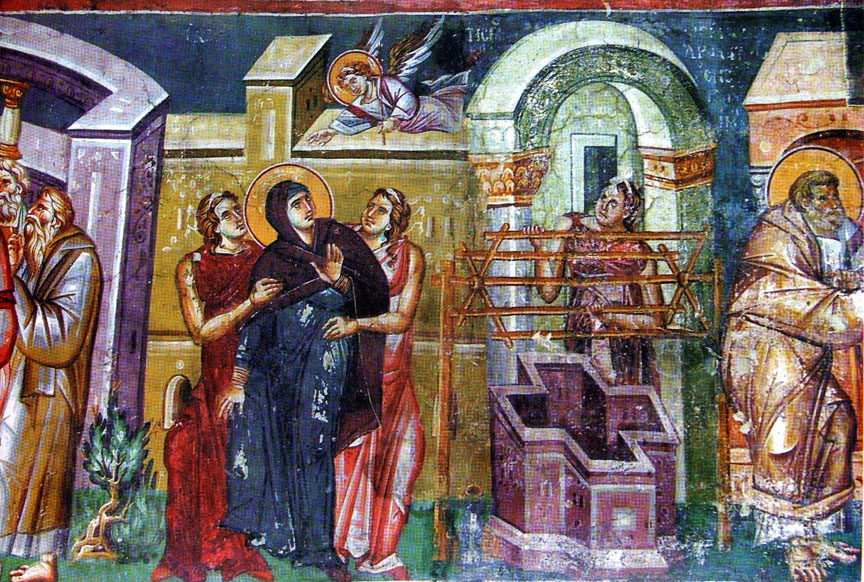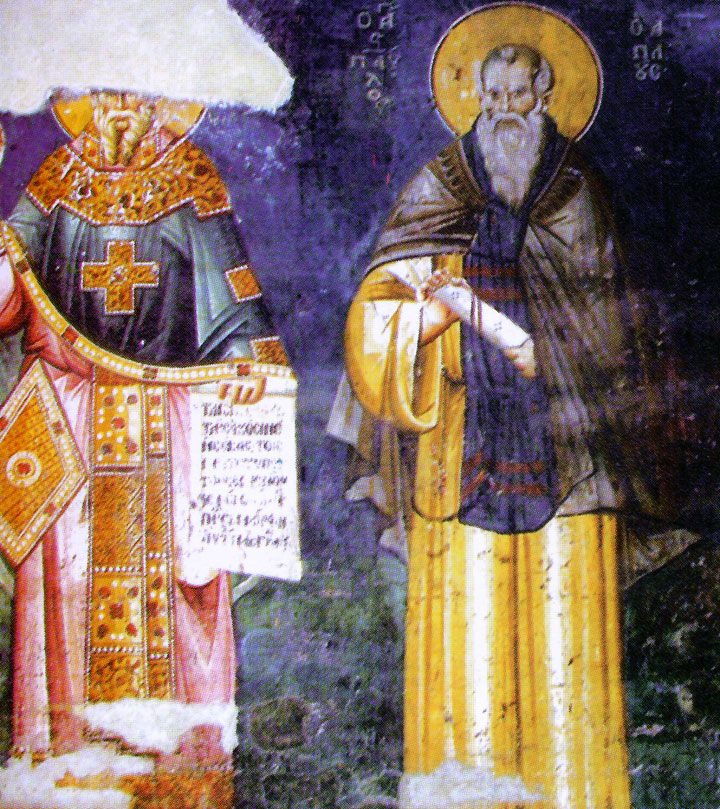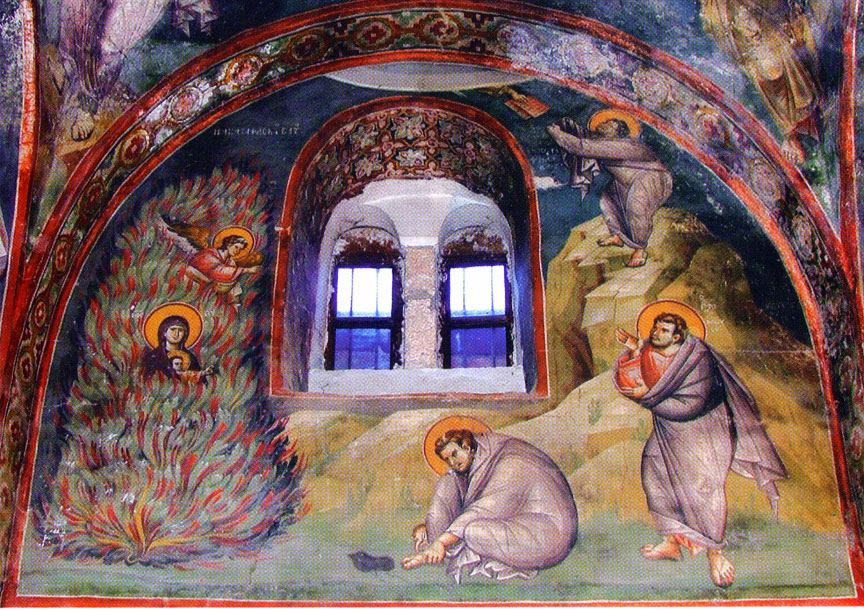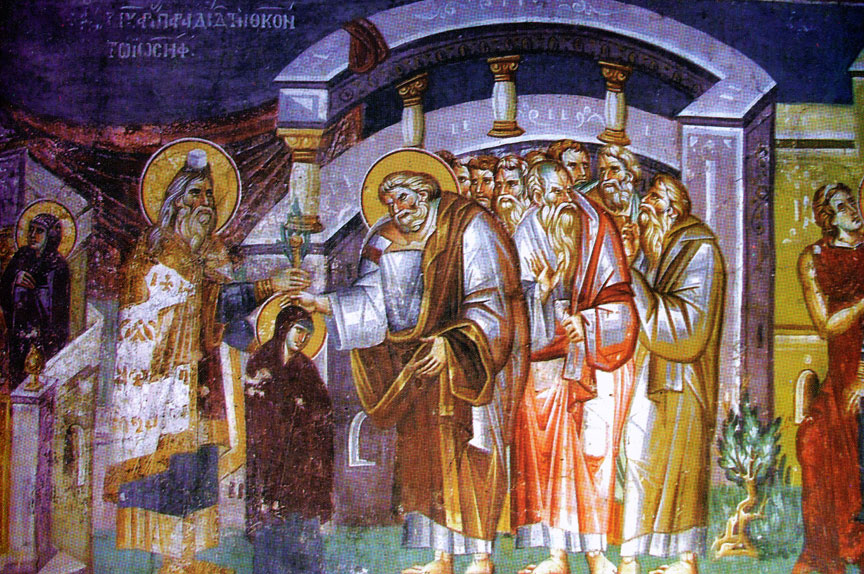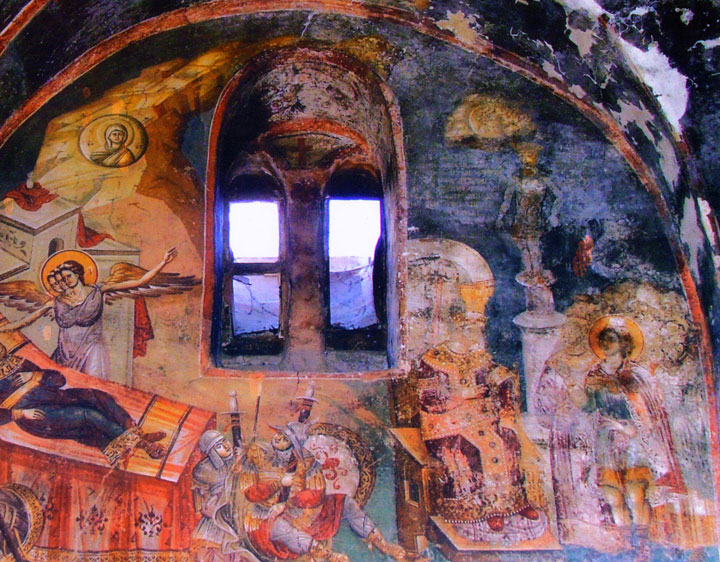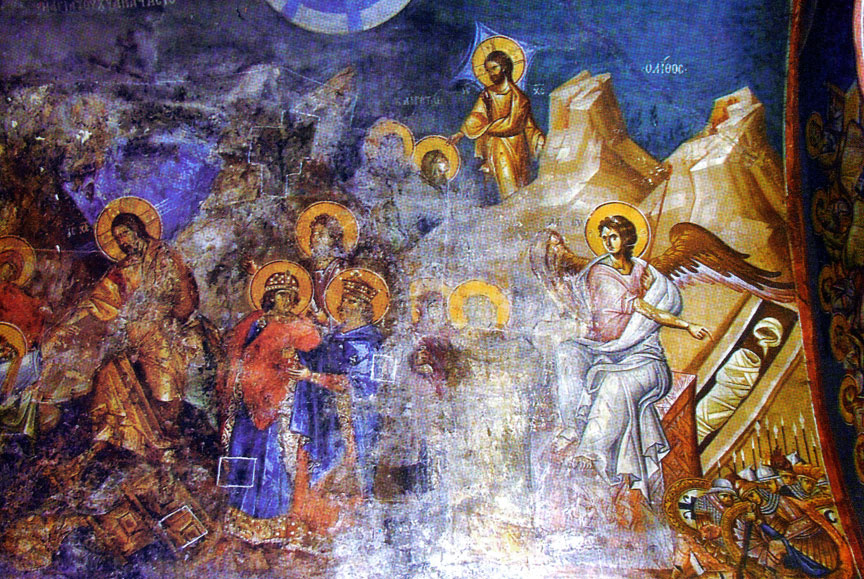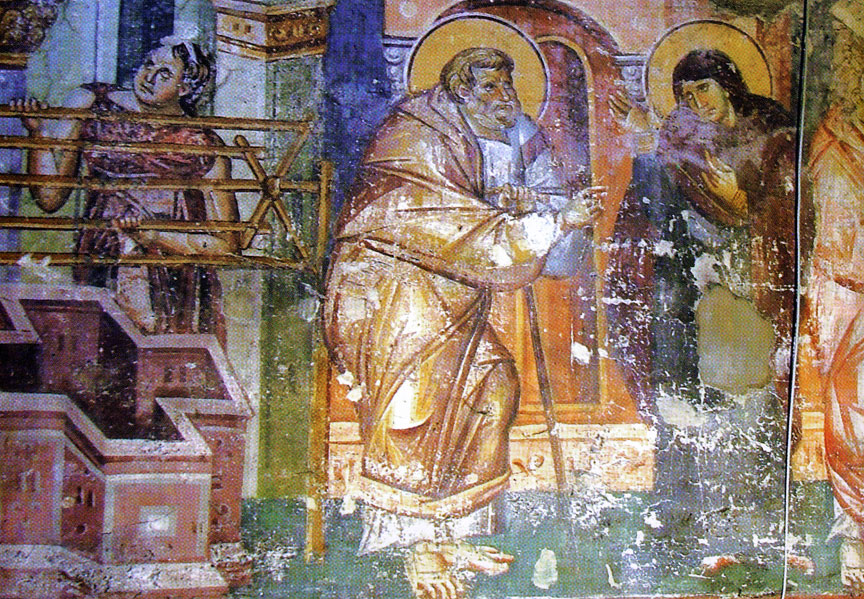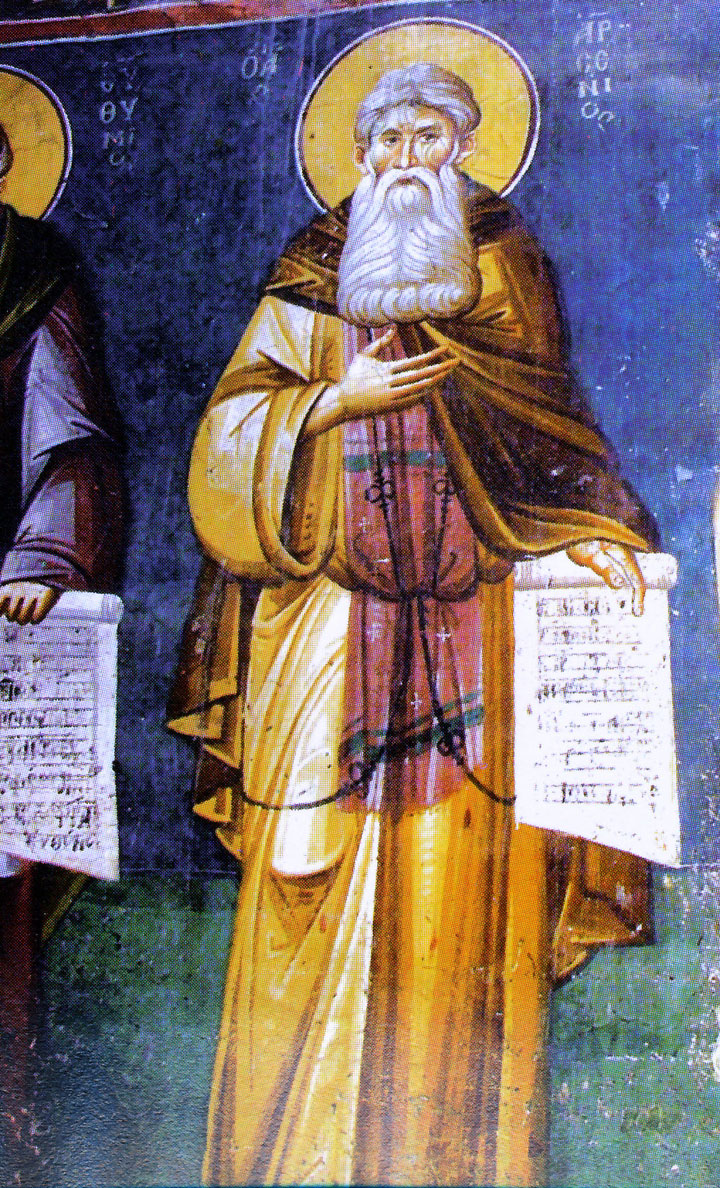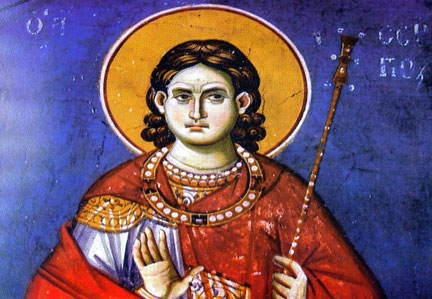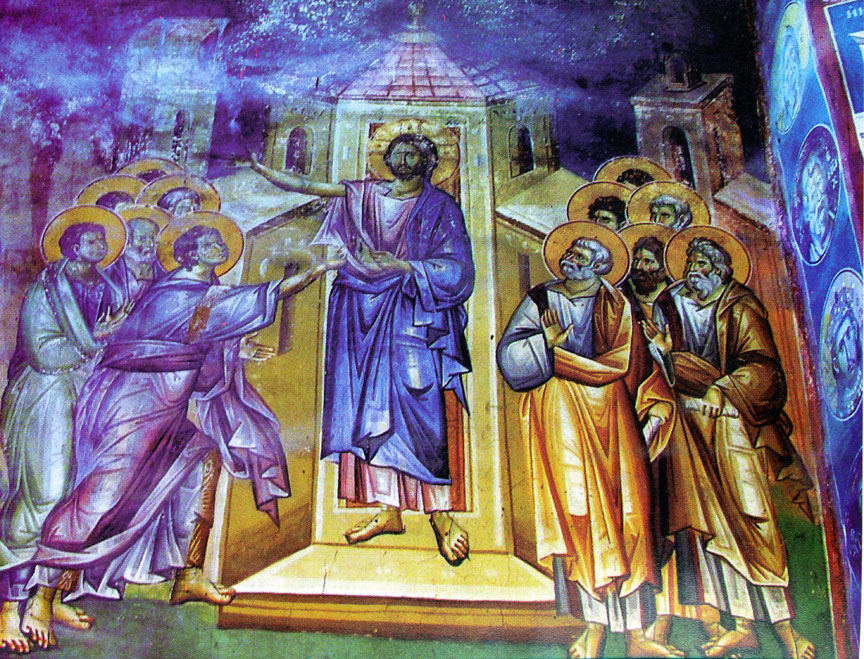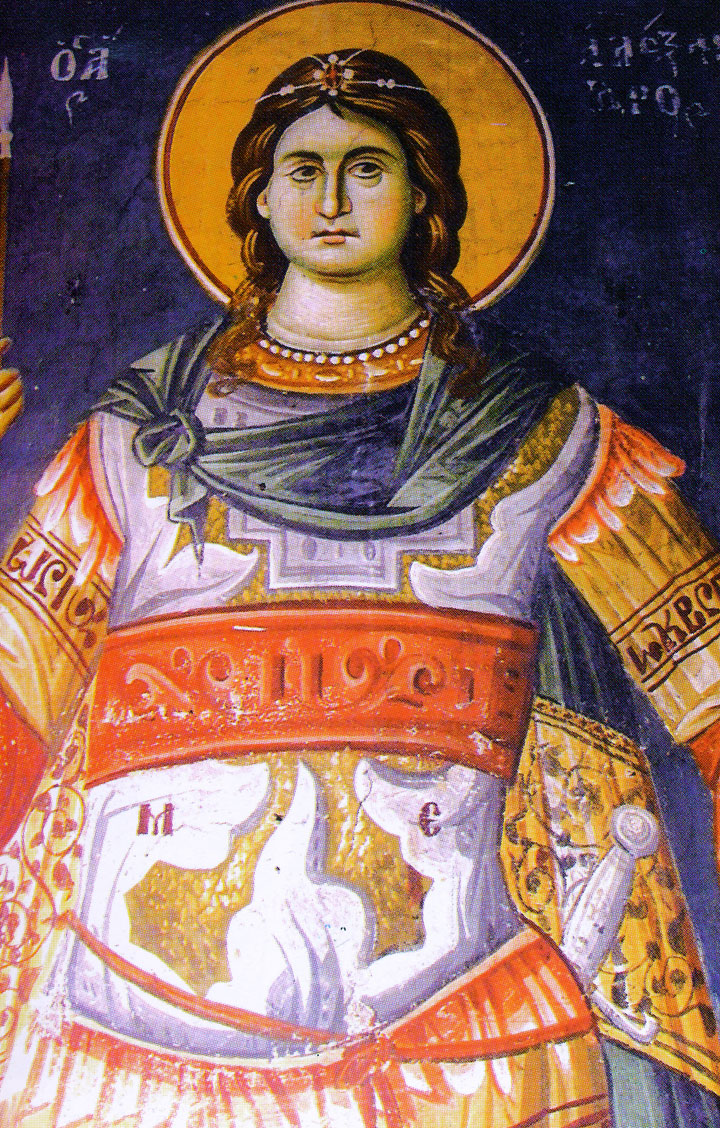

Akathist
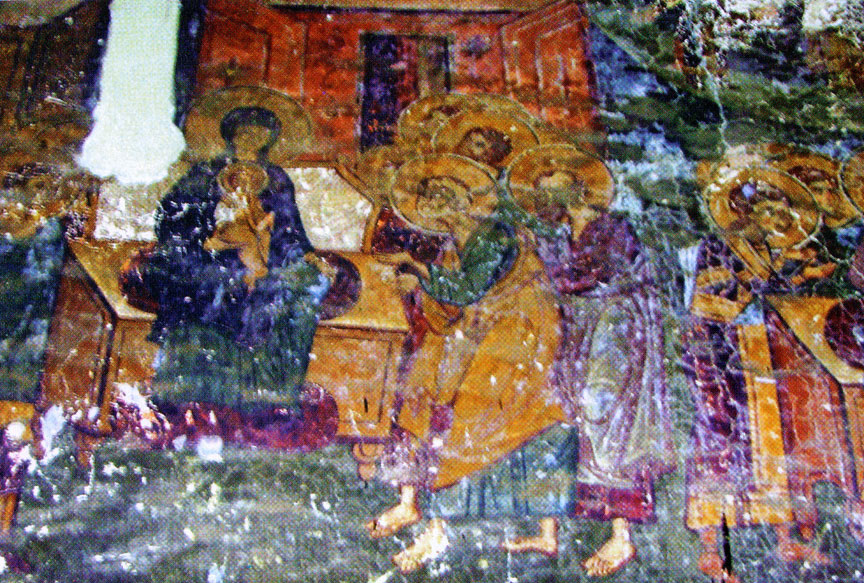
Scene from the Akathistos
The Akathist Hymn (Ἀκάθιστος Ὕμνος, unseated hymn) is a hymn of Eastern Orthodox and Eastern Catholic tradition dedicated to a saint, holy event, or one of the persons of the Holy Trinity. The name derives from the fact that during the chanting of the hymn, or sometimes the whole service, the congregation is expected to remain standing in reverence, without sitting down, except for the aged or infirm. During Orthodox Christian and Eastern Catholic religious services in general, sitting, standing, bowing and the making of prostrations are set by an intricate set of rules, as well as individual discretion. Only during readings of the Gospel and the singing of Akathists is standing considered mandatory for all. The akathist par excellence is that written in the 6th century to the Theotokos. In its use as part of the service of the Salutations to the Theotokos (used in the Byzantine tradition during Great Lent), it is often known by its Greek or Arabic names, Chairetismoi (Χαιρετισμοί, "Rejoicings") and Madayeh, respectively; in the Slavic tradition it is known as Akafist.

Scene from the Akathistos
The writing of akathists (occasionally spelled acathist) continues today as part of the general composition of an akolouthia, particularly in the Slavic tradition, although not all are widely known nor translated beyond the original language. Reader Isaac E. Lambertsen has done a large amount of translation work, including many different akathists. Most of the newer akathists are pastiche, that is, a generic form imitating the original 6th century akathist to the Theotokos into which a particular saint's name is inserted. In the Greek, Arabic, and Russian Old Rite traditions, the only akathist permitted in formal liturgical use is the original akathist.
Text from Wikipedia
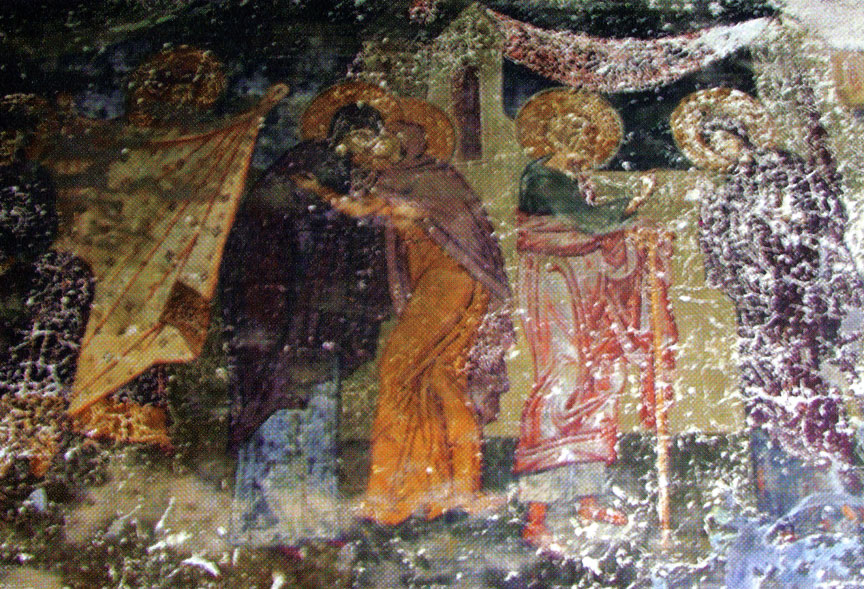

Scenes from the Akathistos

